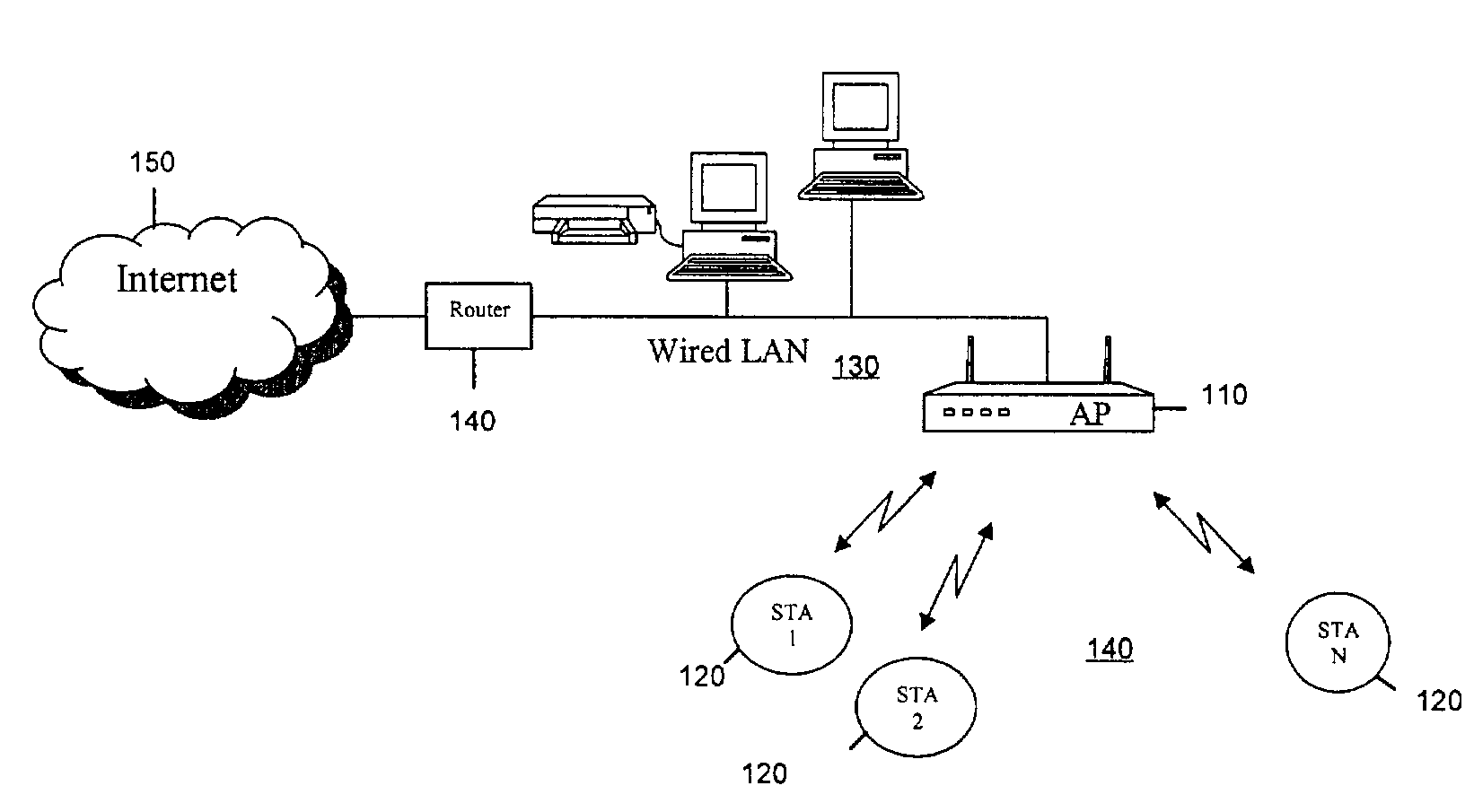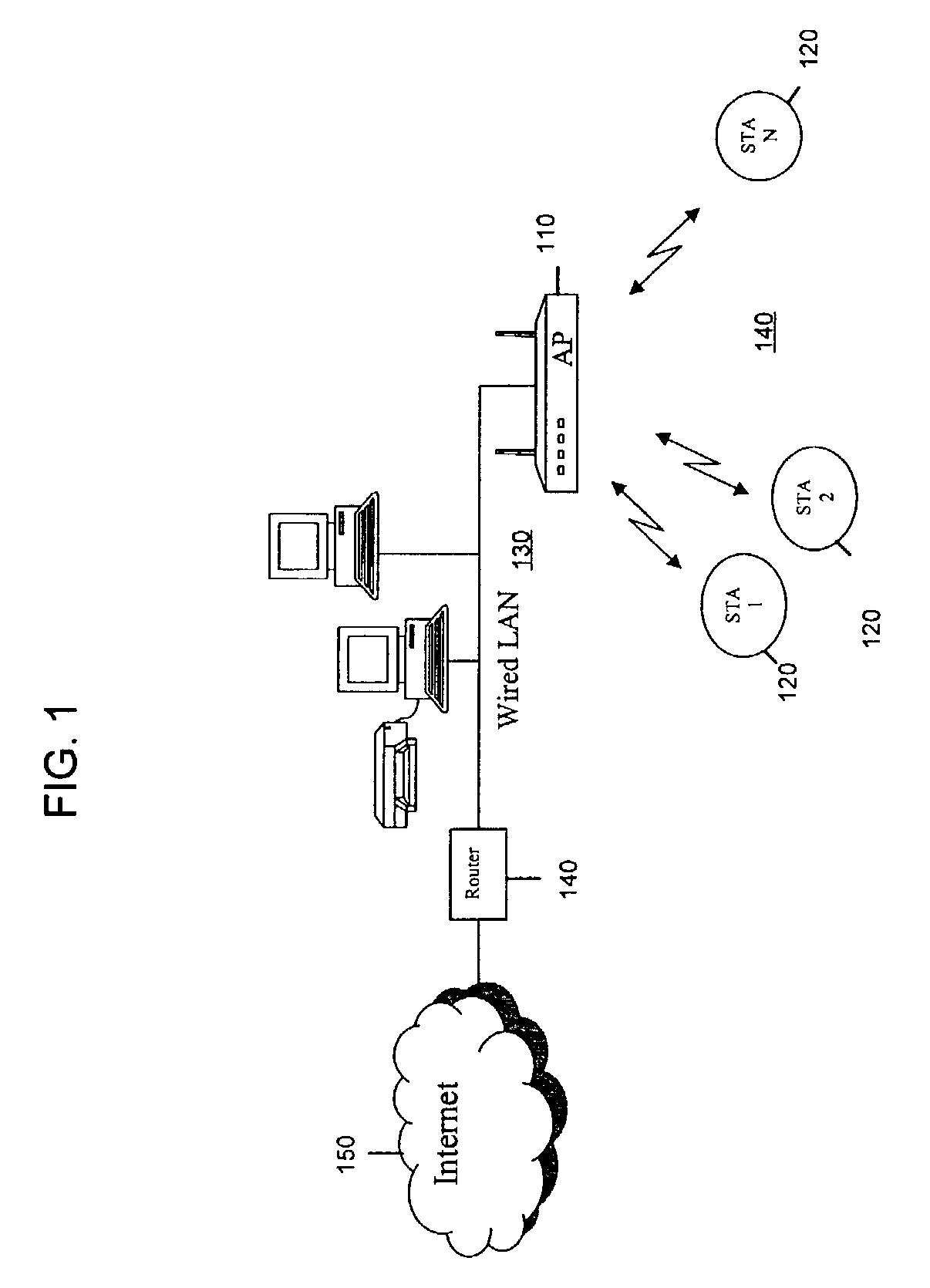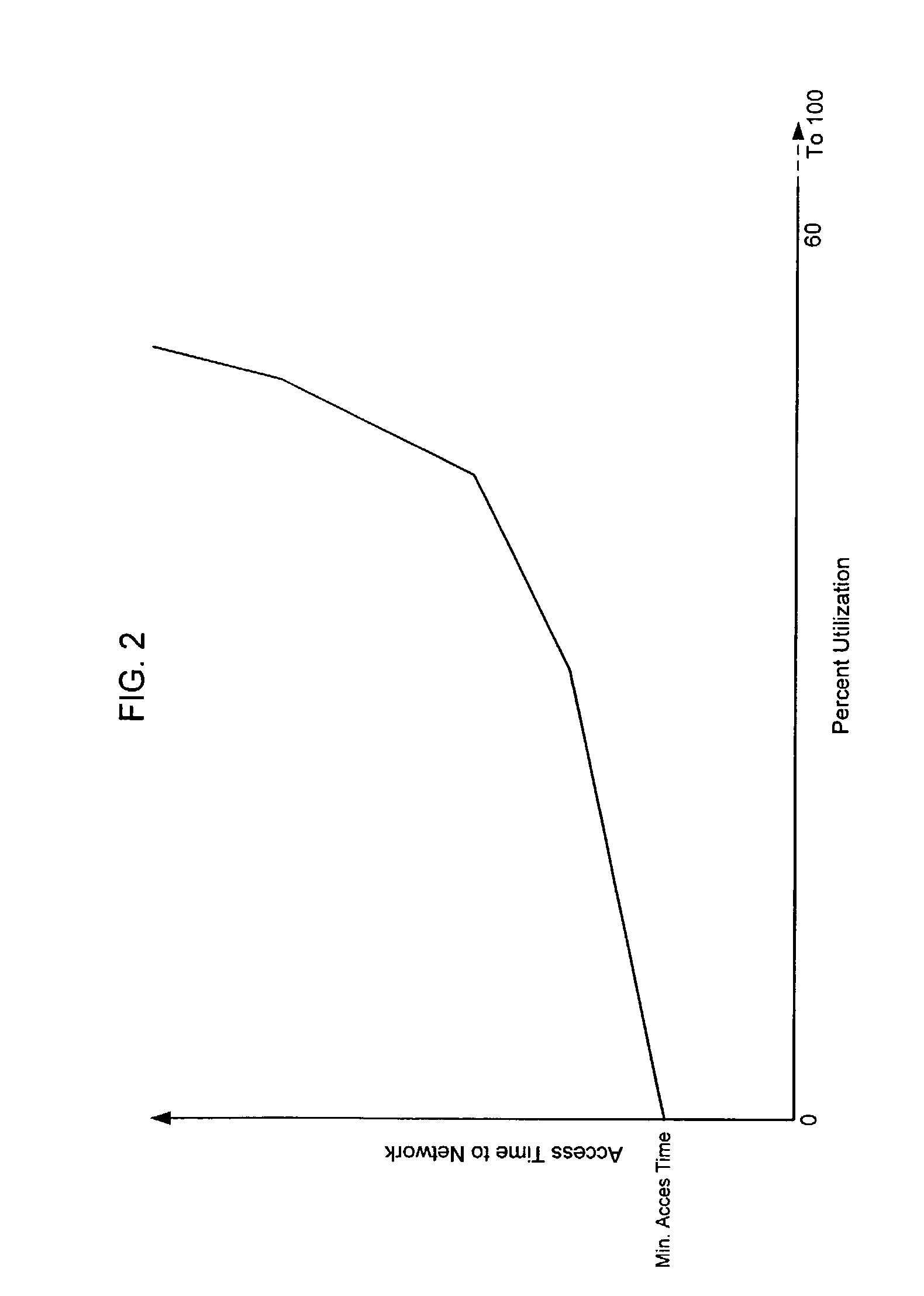Throughput in multi-rate wireless networks using variable-length packets and other techniques
a wireless network and variable-length packet technology, applied in the field of wireless networks, can solve the problems of limiting throughput for high data rate users, negating the benefit of high data rate for fast users, and high data rate users not realizing the benefit of their faster data rate. to achieve the effect of optimizing throughput in the network
- Summary
- Abstract
- Description
- Claims
- Application Information
AI Technical Summary
Benefits of technology
Problems solved by technology
Method used
Image
Examples
Embodiment Construction
[0035]FIG. 1 illustrates an exemplary system where a wireless local area network (WLAN) 100 consisting of an access point (AP) 110 and a plurality of stations (STAs) (STA1–STAN) 120. The AP 110 may interconnect to a wired LAN 130, and ultimately, through a router 140, to the Internet 150.
[0036]FIG. 3 illustrates an exemplary AP 110 and a STA 120. In general, the AP 110 comprises a control processor 112, a baseband signal processor 114 and a radio transceiver 116. (it should be understood that the control processor 112 and the baseband signal processor 114 may be implemented on a single processing device.) The AP 110 receives signals from, and transmits signals to, the STAs 120 via one or more antennas 118. The processor 112 routes the received data from the STAs, and also directs outgoing data to the appropriate STA. In addition, the processor 112 in the AP 110 may execute a network throughput control process, described hereinafter, to control the average throughput on the WLAN 100....
PUM
 Login to View More
Login to View More Abstract
Description
Claims
Application Information
 Login to View More
Login to View More - R&D
- Intellectual Property
- Life Sciences
- Materials
- Tech Scout
- Unparalleled Data Quality
- Higher Quality Content
- 60% Fewer Hallucinations
Browse by: Latest US Patents, China's latest patents, Technical Efficacy Thesaurus, Application Domain, Technology Topic, Popular Technical Reports.
© 2025 PatSnap. All rights reserved.Legal|Privacy policy|Modern Slavery Act Transparency Statement|Sitemap|About US| Contact US: help@patsnap.com



